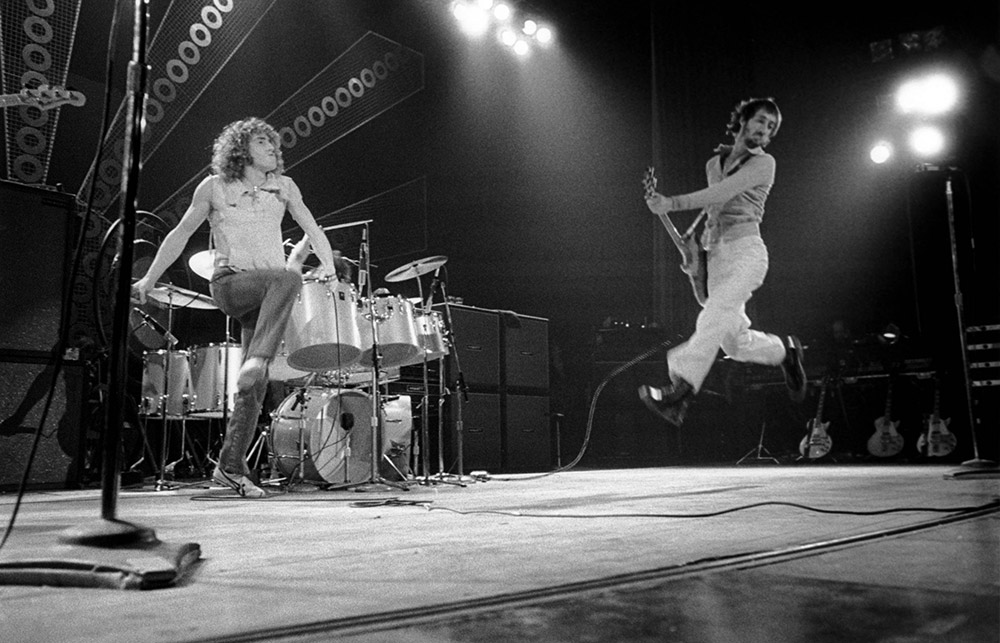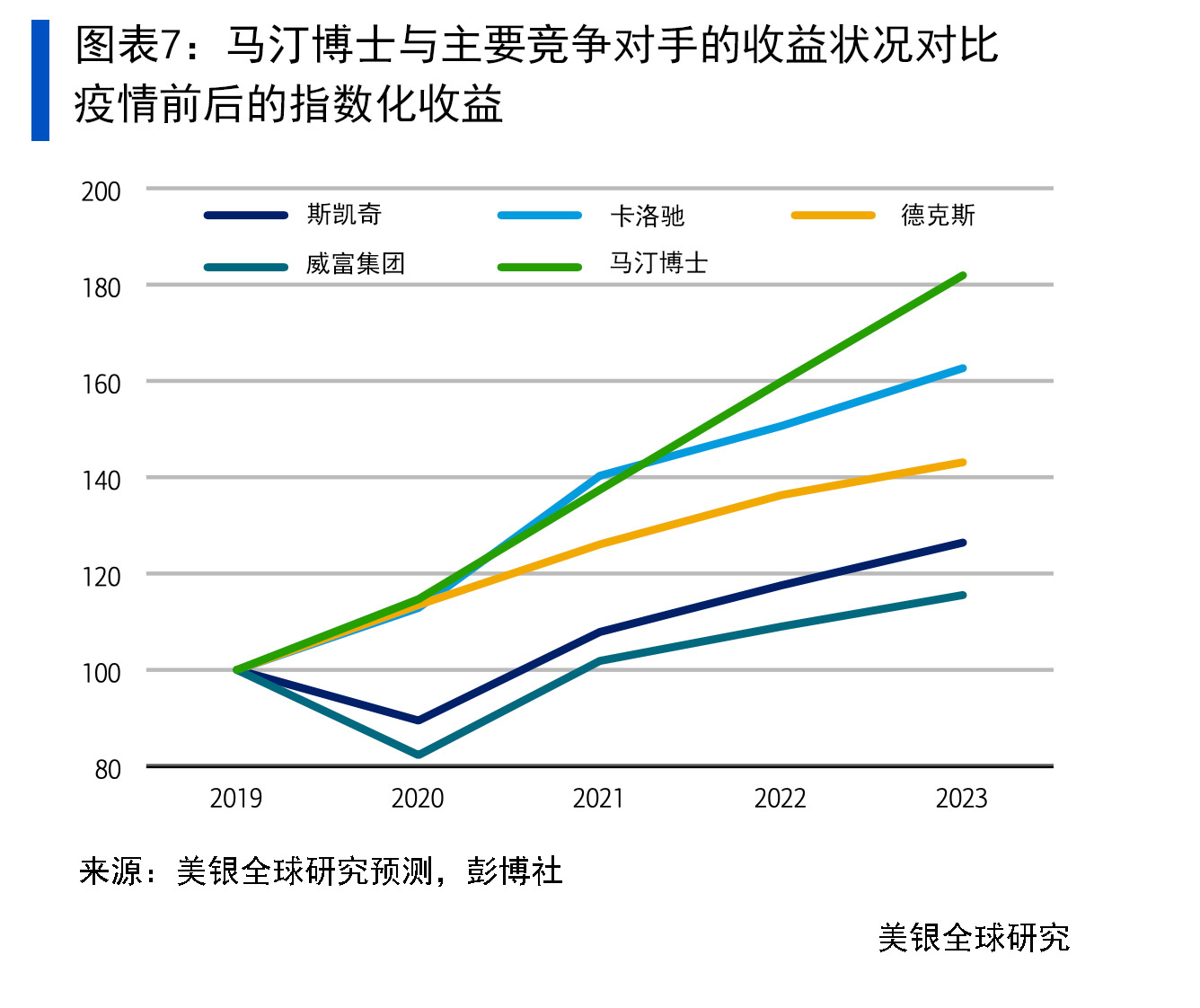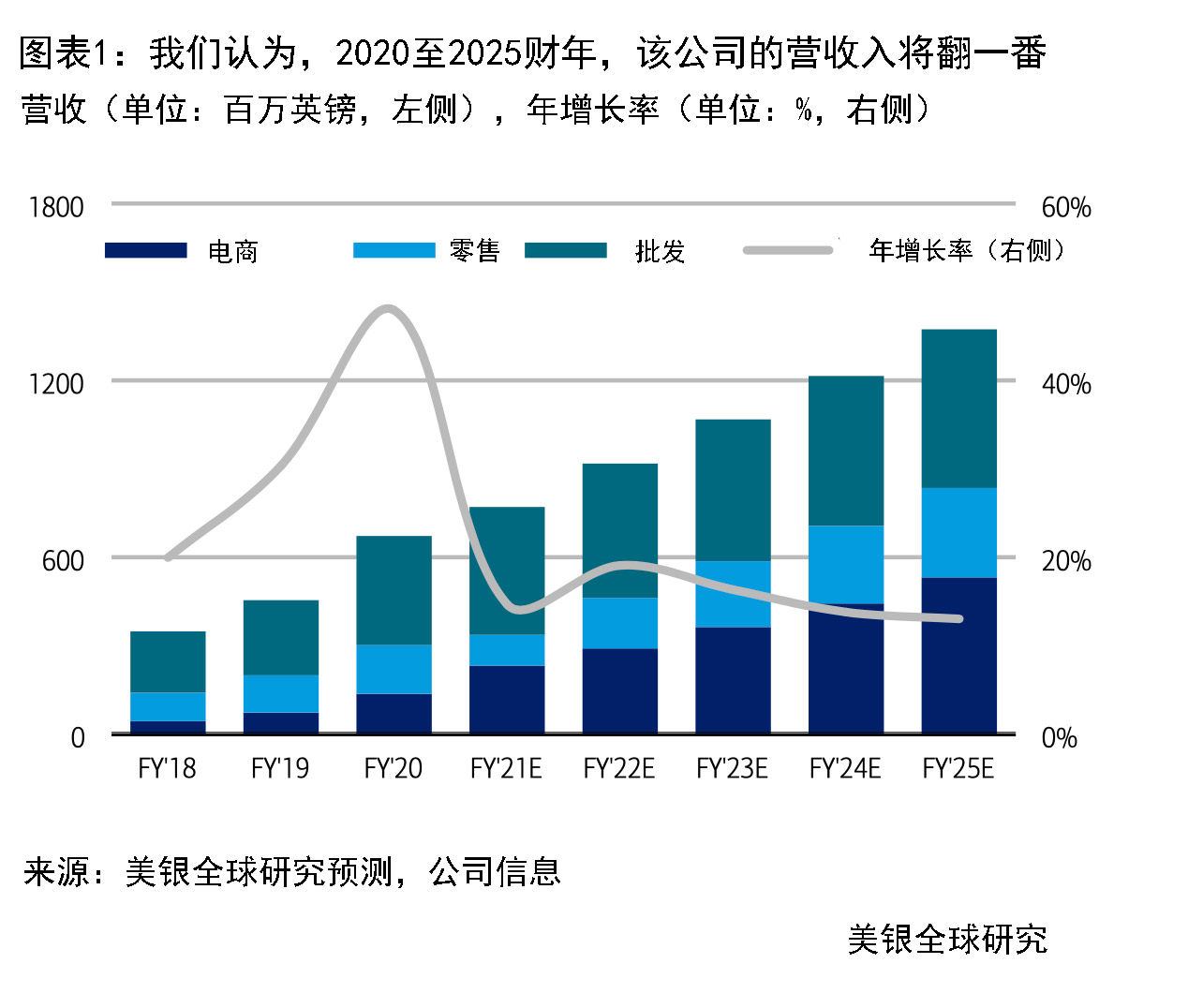要想猜出一個人的年齡,以及他年輕時所處的文化環(huán)境,,你只需要問問他對馬丁靴的看法就夠了,。
馬丁靴是典型的一個品牌帶火一類產(chǎn)品的例子,。馬汀博士(Dr. Martens)這個品牌起源于德國,在該品牌74年的歷史中,,它受到了一個又一個消費群體的追捧,。在最初的10年里,它的產(chǎn)品主要面向家庭婦女,,然后逐步擴(kuò)大到了工廠工人,,接著是郵政員工、嬉皮士,、搖滾樂手,。到了這時,,馬丁靴已經(jīng)成了新潮的代名詞,。西方國家流行過的各種非主流流派,比如光頭黨,、朋克,、新浪潮、哥特派,、垃圾搖滾和雅皮士等等,,基本上人人腳上一雙馬丁靴。直到今天,,你也經(jīng)常會在青少年網(wǎng)紅和時尚達(dá)人腳上看到這種厚底鞋,。因此過去三個月以來,馬汀博士的股票受到了很多新投資者的追捧,,也就不奇怪了,。
可以想象,即便在將來,,馬丁靴依然不乏忠實的消費群體,。
馬丁靴的顧客群體并沒有明顯的分野。據(jù)傳在20世紀(jì)70年代末,,倫敦的光頭黨被警察追得滿街跑的時候,,不論是追人的還是被追的,所有人腳上穿的都是馬丁靴,。在一些地方,,祖孫幾代人都擁有自己的馬丁靴。
“這種鞋的設(shè)計稱不上時尚,,最暢銷的款式就是黑色漆皮加厚厚的橡膠鞋底,。”《打造品牌的原真性》(Building Brand Authenticity)一書的作者邁克爾·貝弗蘭告訴《財富》雜志,。
“要想有意識地打造一個經(jīng)典品牌是很難的,?!必惛ヌm指出:“最重要的是品牌的質(zhì)量和原真性。不過運氣也很重要,,它必須被正確的對象注意到,,并且準(zhǔn)確地代表一種文化。而馬丁靴則被人們視為代表了很多不同的文化,?!?/font>
腳踩馬丁靴
馬丁靴的歷史,要追溯到初代的馬汀博士——克勞斯·馬汀博士,,他既是一名鞋匠,,也是一名軍醫(yī)。二戰(zhàn)剛剛結(jié)束幾周后,,他就在一次滑雪時摔斷了幾根腳骨,。雖然當(dāng)時的慕尼黑飽受戰(zhàn)爭蹂躪,但他還是撿來了一些材料,,為自己做了一雙鞋,,好讓自己在康復(fù)過程中走路能夠更輕松一些。
不久之后,,馬丁與大學(xué)時認(rèn)識的朋友赫伯特·芬克博士成立了一家公司——所以馬丁靴本來也有機(jī)會被稱作“芬克靴”,。接下來幾年,馬丁靴的購買者主要是家庭主婦和傷殘軍人,。到了1959年,,他們把專利賣給了英國鞋靴制造商R. Griggs集團(tuán)(R. Griggs Group),后者開始在英國生產(chǎn)馬丁靴,。
馬丁靴最暢銷的款式永遠(yuǎn)是它的第一款——一款名叫“1460”的八孔系帶靴,。“1460”這個名字是為了紀(jì)念這雙靴子的發(fā)售日期——1960年4月1日,。去年,,這款靴子為公司貢獻(xiàn)了42%的銷量。
不過據(jù)馬丁·羅奇的暢銷書《馬丁靴:經(jīng)典的故事》(Dr. Martens: The Story of an Icon)介紹,,馬丁靴真正火起來,,并被賦予了流行文化內(nèi)涵,還要歸功于英國誰人樂隊(The Who)的吉他手彼得·湯森德,,是他在1966年首次穿著馬丁靴上臺演出,,才為馬丁靴帶來了曝光率。

湯森德表示,,馬丁靴非常適合在舞臺上奔跑和跳躍,。他寫過一首名叫《制服》(Uniforms)的歌,,其中專門提到了他最喜歡的靴子:
“你來自哪里不重要/重要的是你的制服/系上安全帶/腳踩馬丁靴”
IPO受到熱捧
當(dāng)然,現(xiàn)如今,,很多人早已不認(rèn)識湯森德和他的誰人樂隊了,,但馬丁靴依然在很多文化群體中流行。據(jù)馬汀博士公司介紹,,該公司的產(chǎn)品在全球60個國家有售,,年銷量接近1200萬雙。該公司正在打造一條有能力年產(chǎn)2000萬雙鞋的供應(yīng)鏈,,以滿足日益增長的需求,。據(jù)一些證券分析師介紹,該公司去年的營收為6.72億英鎊(約9.5億美元),,幾乎較上一年度翻了一番,,而且很有可能會繼續(xù)快速增長。
馬汀博士現(xiàn)在的母公司Permira于2014年收購了R. Griggs集團(tuán),,并在今年1月推動了馬汀博士在倫敦證券交易所(London Stock Exchange)上市,。由于機(jī)構(gòu)投資者爭先恐后地想早些持有該股,,此次上市獲得了大量超額認(rèn)購,。5月7日五下午,馬汀博士的股價為4.82英鎊,,比上市價格高出了30%,,使該公司的估值達(dá)到47億英鎊(超過65億美元)。
馬汀博士公司員工的平均年收入高達(dá)42萬英鎊(約合58.5萬美元),,在倫敦證券交易所的富時250指數(shù)(FTSE 250 Index)中排名前三,。這一指標(biāo)也引起了美銀證券(BofA Securities)分析師的注意,他們認(rèn)為,,至少在2024年以前,,馬汀博士的銷售額可以實現(xiàn)兩位數(shù)的增長率,遠(yuǎn)高于卡洛馳(Crocs)和斯凱奇(Skechers)等鞋業(yè)同行,,以及博柏利(Burberry)和盟可睞(Moncler)等奢侈品牌,。

美銀的分析師認(rèn)為,馬汀博士有望成為“后疫情時代”的一顆耀眼的明星,。他們在今年3月的一篇投資者報告中寫道:“我們認(rèn)為經(jīng)濟(jì)的重啟將利好2022財年,,并預(yù)計該公司的營收將增長19.1%。該公司的長期收益也有電商銷量的強(qiáng)勢增長……以及零售店的推出作為支持,?!?/p>

美銀的目標(biāo)股價比5月6日的收盤價高出21%。
常伴女王左右
雖然馬汀博士在股市上受到了熱捧,,但它作為一個文化符號的流行性并未受到任何影響,。
瑞貝卡·肖克羅斯是位于英國的北安普頓藝術(shù)博物館(Northampton Museum and Art Gallery)的高級鞋靴展策劃人,。這座博物館位于倫敦和伯明翰之間,這里也歷來是英國制鞋業(yè)最發(fā)達(dá)的地區(qū),。
這座博物館收藏了1.5萬多雙鞋,,以及6萬多件與鞋相關(guān)的物品,其中包括一只公元前300年的埃及涼鞋,,還有一雙絲質(zhì)小拖鞋,,是1840年維多利亞女王嫁給阿爾伯特親王時穿的。這里還收藏了100多雙不同的馬丁靴以及大量的相關(guān)紀(jì)念品,。肖克羅斯表示:“沒有馬丁靴,,你就根本辦不起來一個像樣的鞋展?!?/p>
她對《財富》雜志表示,,馬丁靴簡單實用的外觀,可能正是它長久不衰的關(guān)鍵所在,。正是因為這種特質(zhì),,所以任何人都會想擁有一雙自己的馬丁靴,不管是梳著莫西干的朋克青年,,還是辣妹組合(Spice Girls),、時裝模特,甚至是英國議會里正襟危坐的年老議員,。
“這雙鞋就像一張空白的畫布,,只受想象力的限制?!毙た肆_斯說:“每一個群體都可以從自己的角度看待它,。”(財富中文網(wǎng))
譯者:樸成奎
要想猜出一個人的年齡,,以及他年輕時所處的文化環(huán)境,,你只需要問問他對馬丁靴的看法就夠了。
馬丁靴是典型的一個品牌帶火一類產(chǎn)品的例子,。馬汀博士(Dr. Martens)這個品牌起源于德國,,在該品牌74年的歷史中,它受到了一個又一個消費群體的追捧,。在最初的10年里,,它的產(chǎn)品主要面向家庭婦女,然后逐步擴(kuò)大到了工廠工人,,接著是郵政員工,、嬉皮士、搖滾樂手,。到了這時,,馬丁靴已經(jīng)成了新潮的代名詞,。西方國家流行過的各種非主流流派,比如光頭黨,、朋克,、新浪潮、哥特派,、垃圾搖滾和雅皮士等等,,基本上人人腳上一雙馬丁靴。直到今天,,你也經(jīng)常會在青少年網(wǎng)紅和時尚達(dá)人腳上看到這種厚底鞋,。因此過去三個月以來,馬汀博士的股票受到了很多新投資者的追捧,,也就不奇怪了,。
可以想象,即便在將來,,馬丁靴依然不乏忠實的消費群體,。
馬丁靴的顧客群體并沒有明顯的分野。據(jù)傳在20世紀(jì)70年代末,,倫敦的光頭黨被警察追得滿街跑的時候,,不論是追人的還是被追的,所有人腳上穿的都是馬丁靴,。在一些地方,,祖孫幾代人都擁有自己的馬丁靴,。
“這種鞋的設(shè)計稱不上時尚,,最暢銷的款式就是黑色漆皮加厚厚的橡膠鞋底?!薄洞蛟炱放频脑嫘浴罚˙uilding Brand Authenticity)一書的作者邁克爾·貝弗蘭告訴《財富》雜志,。
“要想有意識地打造一個經(jīng)典品牌是很難的?!必惛ヌm指出:“最重要的是品牌的質(zhì)量和原真性,。不過運氣也很重要,它必須被正確的對象注意到,,并且準(zhǔn)確地代表一種文化,。而馬丁靴則被人們視為代表了很多不同的文化?!?/p>
腳踩馬丁靴
馬丁靴的歷史,,要追溯到初代的馬汀博士——克勞斯·馬汀博士,他既是一名鞋匠,,也是一名軍醫(yī),。二戰(zhàn)剛剛結(jié)束幾周后,,他就在一次滑雪時摔斷了幾根腳骨。雖然當(dāng)時的慕尼黑飽受戰(zhàn)爭蹂躪,,但他還是撿來了一些材料,,為自己做了一雙鞋,好讓自己在康復(fù)過程中走路能夠更輕松一些,。
不久之后,,馬丁與大學(xué)時認(rèn)識的朋友赫伯特·芬克博士成立了一家公司——所以馬丁靴本來也有機(jī)會被稱作“芬克靴”。接下來幾年,,馬丁靴的購買者主要是家庭主婦和傷殘軍人,。到了1959年,他們把專利賣給了英國鞋靴制造商R. Griggs集團(tuán)(R. Griggs Group),,后者開始在英國生產(chǎn)馬丁靴,。
馬丁靴最暢銷的款式永遠(yuǎn)是它的第一款——一款名叫“1460”的八孔系帶靴?!?460”這個名字是為了紀(jì)念這雙靴子的發(fā)售日期——1960年4月1日,。去年,這款靴子為公司貢獻(xiàn)了42%的銷量,。
不過據(jù)馬丁·羅奇的暢銷書《馬丁靴:經(jīng)典的故事》(Dr. Martens: The Story of an Icon)介紹,,馬丁靴真正火起來,并被賦予了流行文化內(nèi)涵,,還要歸功于英國誰人樂隊(The Who)的吉他手彼得·湯森德,,是他在1966年首次穿著馬丁靴上臺演出,才為馬丁靴帶來了曝光率,。
湯森德表示,,馬丁靴非常適合在舞臺上奔跑和跳躍。他寫過一首名叫《制服》(Uniforms)的歌,,其中專門提到了他最喜歡的靴子:
“你來自哪里不重要/重要的是你的制服/系上安全帶/腳踩馬丁靴”
IPO受到熱捧
當(dāng)然,,現(xiàn)如今,很多人早已不認(rèn)識湯森德和他的誰人樂隊了,,但馬丁靴依然在很多文化群體中流行,。據(jù)馬汀博士公司介紹,該公司的產(chǎn)品在全球60個國家有售,,年銷量接近1200萬雙,。該公司正在打造一條有能力年產(chǎn)2000萬雙鞋的供應(yīng)鏈,以滿足日益增長的需求,。據(jù)一些證券分析師介紹,,該公司去年的營收為6.72億英鎊(約9.5億美元),幾乎較上一年度翻了一番,而且很有可能會繼續(xù)快速增長,。
馬汀博士現(xiàn)在的母公司Permira于2014年收購了R. Griggs集團(tuán),,并在今年1月推動了馬汀博士在倫敦證券交易所(London Stock Exchange)上市。由于機(jī)構(gòu)投資者爭先恐后地想早些持有該股,,此次上市獲得了大量超額認(rèn)購,。5月7日五下午,馬汀博士的股價為4.82英鎊,,比上市價格高出了30%,,使該公司的估值達(dá)到47億英鎊(超過65億美元)。
馬汀博士公司員工的平均年收入高達(dá)42萬英鎊(約合58.5萬美元),,在倫敦證券交易所的富時250指數(shù)(FTSE 250 Index)中排名前三,。這一指標(biāo)也引起了美銀證券(BofA Securities)分析師的注意,他們認(rèn)為,,至少在2024年以前,,馬汀博士的銷售額可以實現(xiàn)兩位數(shù)的增長率,遠(yuǎn)高于卡洛馳(Crocs)和斯凱奇(Skechers)等鞋業(yè)同行,,以及博柏利(Burberry)和盟可睞(Moncler)等奢侈品牌,。
美銀的分析師認(rèn)為,馬汀博士有望成為“后疫情時代”的一顆耀眼的明星,。他們在今年3月的一篇投資者報告中寫道:“我們認(rèn)為經(jīng)濟(jì)的重啟將利好2022財年,,并預(yù)計該公司的營收將增長19.1%。該公司的長期收益也有電商銷量的強(qiáng)勢增長……以及零售店的推出作為支持,?!?/p>
美銀的目標(biāo)股價比5月6日的收盤價高出21%。
常伴女王左右
雖然馬汀博士在股市上受到了熱捧,,但它作為一個文化符號的流行性并未受到任何影響,。
瑞貝卡·肖克羅斯是位于英國的北安普頓藝術(shù)博物館(Northampton Museum and Art Gallery)的高級鞋靴展策劃人。這座博物館位于倫敦和伯明翰之間,,這里也歷來是英國制鞋業(yè)最發(fā)達(dá)的地區(qū),。
這座博物館收藏了1.5萬多雙鞋,以及6萬多件與鞋相關(guān)的物品,,其中包括一只公元前300年的埃及涼鞋,還有一雙絲質(zhì)小拖鞋,,是1840年維多利亞女王嫁給阿爾伯特親王時穿的,。這里還收藏了100多雙不同的馬丁靴以及大量的相關(guān)紀(jì)念品。肖克羅斯表示:“沒有馬丁靴,,你就根本辦不起來一個像樣的鞋展,。”
她對《財富》雜志表示,,馬丁靴簡單實用的外觀,,可能正是它長久不衰的關(guān)鍵所在,。正是因為這種特質(zhì),所以任何人都會想擁有一雙自己的馬丁靴,,不管是梳著莫西干的朋克青年,,還是辣妹組合(Spice Girls)、時裝模特,,甚至是英國議會里正襟危坐的年老議員,。
“這雙鞋就像一張空白的畫布,只受想象力的限制,?!毙た肆_斯說:“每一個群體都可以從自己的角度看待它?!保ㄘ敻恢形木W(wǎng))
譯者:樸成奎
Turns out you can make a pretty good guess about someone’s age, and the cultural circumstances of their youth, based on what they think of Dr. Martens.
Dr. Martens boots and shoes have been adopted by group after group in the 74 years since they were first sold commercially in Germany. In their first decade, most sales were to housewives. Then came the factory workers, followed by post office employees, then hippies, rock and rollers, and, later, glam musicians. Also around then, there were the skinheads and punks, the New Wavers and goths, the grunge crowd and yuppies. Today, you’re likely to see those thick rubber soles on the feet of teen influencers and fashionistas. It’s little wonder new investors have been piling into the shares over the past three months.
In any case, it’s anyone’s guess which consumer groups will come next.
There are no neat lines between each new phase of customer. There are anecdotes about skinhead gangs in North London being chased through alleyways by police in the late 1970s, and everybody involved was wearing DMs. In some places, multiple generations of families all own a pair of Docs.
“The shoe design isn’t trendy: The bestselling models are black patent leather with thick rubber soles,” Michael Beverland, author of Building Brand Authenticity, which uses Doc Martens among its case studies, told Fortune.
“It’s very difficult to set out to purposefully make an iconic brand,” Beverland continued. “Quality and authenticity are essential. But it’s also about good luck, being noticed by the right people, and accurately representing the culture. With Doc Martens, it helps that they can be seen as representing many different cultures.”
“Dr. Martens on your feet”
The boots’ origin story dates back to when the original Dr. Martens —Dr. Klaus Maertens, that is, a former cobbler and military medic—broke some bones in his foot while skiing a few weeks after the end of World War II. Using reclaimed material from war-ravaged Munich he made the first pair of shoes for himself, so he could walk more easily during his recovery.
Soon after, Maertens formed a company with a college friend, Dr. Herbert Funck—the shoes could have just as easily been called “Doc Funck’s”—and over the next few years they had modest success selling to homemakers and injured soldiers. In 1959, they sold the patent rights to a British shoemaker known as the R. Griggs Group, which started making the shoes in England.
The bestselling Doc Martens model has always been the first, an eight-eyelet lace-up boot called the 1460, named for the exact date—the 1st of April, 1960, as in day, month, year—the boot was first released. Last year, it accounted for 42% of the company’s sales.
But according to Martin Roach’s book Dr. Martens: The Story of an Icon, the shoes really became embedded in popular culture when Pete Townshend, the windmilling guitarist from The Who, began wearing them during performances in 1966.
Townshend, who said the boots were perfect for running and jumping across the stage, wrote a song, “Uniforms,” that mentioned his favorite boots:
It don’t matter where you’re from/What matters is your uniform/Wear your braces round your seat/And Dr. Martens on your feet.
IPO splash
Nowadays, Doc Martens boots and shoes are popular among groups that wouldn’t know Townshend if he walked among them sporting shiny new DMs. And there are a lot of those groups: The company says it sells nearly 12 million pairs a year in 60 different countries. It is building a supply chain with the capacity to deliver 20 million pairs a year by 2023 to meet the heightened demand. Revenue last year was £672 million (just under $950 million), nearly double the figure from two years earlier, and it’s likely to keep growing at a fast clip, equity analysts say.
Parent company Permira—the investment firm that acquired the R. Griggs Group in 2014—took the company public in January on the London Stock Exchange; the listing was massively oversubscribed as institutional investors nearly trampled one another to get in early. On May 7 afternoon, Dr. Martens PLC shares were trading at £4.82, 30% above its listing price. That values the company at £4.7 billion (more than $6.5 billion).
Dr. Martens’s annual revenue of £420,000 ($585,000) per employee ranks it in the top third of the London Stock Exchange’s FTSE 250 index by that measure. Metrics like that caught the eye of BofA Securities analysts, who forecast double-digit sales growth through at least 2024, far outpacing a footwear peer group that includes Crocs and Skechers and luxury peers like Burberry or Moncler.
BofA sees Dr. Martens as a potential post-lockdown star. “We expect a reopening benefit in FY ’22, and forecast 19.1% revenue growth,” analysts wrote in a March investor note. “Long-term revenues should be underpinned by strong e-commerce growth…and retail store rollout.”
BofA’s target price for the shares represents a 21% upside from May 6’s close.
Alongside the queen
Even with all the stock market buzz, the iconic stompers are hip as ever as a cultural symbol.
Rebecca Shawcross is senior shoe curator with England’s Northampton Museum and Art Gallery—about halfway between London and Birmingham, in the heart of the country’s historical shoemaking region.
The museum’s collection of more than 15,000 pairs of shoes and more than 60,000 shoe-related items includes an Egyptian sandal dating to 300 BC and the tiny silk slippers Queen Victoria wore in 1840 when she married her consort, Prince Albert. The museum’s collection also features about a hundred different pairs of Doc Martens shoes and boots, and a lot of related memorabilia. “You couldn’t have a proper shoe collection without Doc Martens,” Shawcross said.
She told Fortune that Doc Martens’s utilitarian, no-nonsense look has likely been key to the product’s remaining relevant for so long because it allowed anyone—from gritty mohawk-wearing punks to the Spice Girls and from runway fashion models to elderly members of the U.K. Parliament—to claim them as their own.
“The shoes are like a blank canvas, limited only by imagination,” Shawcross said. “Each group can see them in their own way.”






